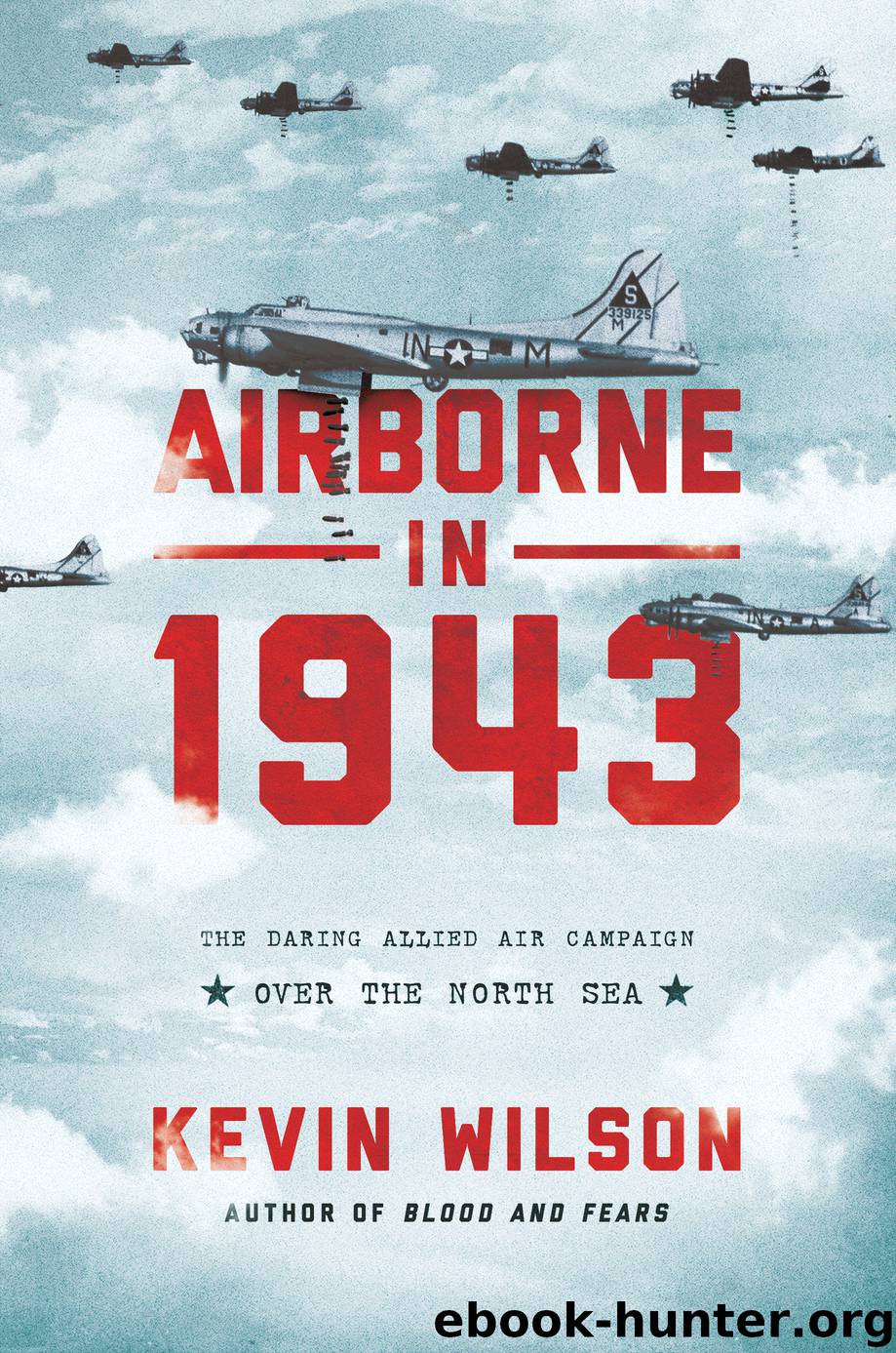Airborne in 1943 by Kevin Wilson

Author:Kevin Wilson
Language: eng
Format: epub
Tags: Epub3
Publisher: Pegasus Books
Some crews of 156 Pathfinder Sqn were acting as backers-up in the third and fourth waves of the six-wave attack and they reported a carpet of fire below dense smoke with approximately 150 ineffective searchlights in the target area.13 Curiously, two 156 crews reported a new type of flak. One described it as an ‘explosive rocket form’ and another, who bombed at the same time of 0130, said it was ‘bursting and shooting out in all directions, yellow in colour’. In fact this report of a ‘scarecrow’ was probably an exploding Stirling. Two Stirlings were shot down by night fighters over the city, the only aircraft to be so, and the Stirling element was in the third wave.14
Hamburg had 41,000 firemen at that time and the first of them were on the scene within ten minutes of the attack opening. Bombing was at first fairly concentrated, but the creepback started fires all the way across Altona, St Pauli, Neustadt, Hoheluft, Eimsbüttel and parts of the docks. Finally there was a major breakdown in the city’s fire-control system when the telephone exchange caught fire and the lines were cut. Fires raged unchecked and after the raid it was estimated that in the city’s western districts there were burning buildings with a frontage of 65 miles. Fire engines could not negotiate the rubble-strewn streets and water had to be pumped from storage tanks or waterways.
Gas, water and electricity lines were damaged, one of the key benefits to the attackers of area bombing. As the all-clear signal sounded just after 3 a.m., 1,500 people lay dead. Among the blitzed landmarks of the city was the Church of St Nicholas. The choir and nave were destroyed and the steeple was burned out, but did not collapse. It now stands as a memorial to the bombing.
The defences, so overwhelmed by Window, had little to show to counterbalance the success of the raid. Only twelve RAF aircraft were missing all told, most of them shot down by night fighters on the return, some over the North Sea, as the effects of the radar-screen snowstorms dissipated. Remarkably, crews who returned reported forty-nine interceptions, but only seven had ended in combat with the Germans.
Hamburg’s flak units, firing blind across the sky, had brought down only one British bomber. It was that of the W/O George Ashplant, who had been awarded the RAF’s first Conspicuous Gallantry Medal in February for giving his own chute to his bomb aimer to bale out after a collision, then managing to crash-land his Wellington. Ashplant, only 21, died with all his crew. It is particularly ironic that someone lucky enough to pull off a Crashlanding in the dark should die by the one shell, fired randomly in the Hamburg night sky, to effectively hit a target.
From Elsham Wolds 103 Sqn had put up twenty-seven aircraft for the raid, the maximum number of any squadron. It meant they also suffered the maximum losses. Three of the missing twelve aircraft were theirs. Not one of the twenty-one men on board survived to become a prisoner of war.
Download
This site does not store any files on its server. We only index and link to content provided by other sites. Please contact the content providers to delete copyright contents if any and email us, we'll remove relevant links or contents immediately.
| Africa | Americas |
| Arctic & Antarctica | Asia |
| Australia & Oceania | Europe |
| Middle East | Russia |
| United States | World |
| Ancient Civilizations | Military |
| Historical Study & Educational Resources |
Before Topgun Days: The Making of a Jet Fighter Instructor by Dave Baranek(793)
Enemy Coast Ahead by Guy Gibson(685)
The SAS Training Manual by Chris McNab;(673)
The True Story of Catch 22 by Patricia Chapman Meder(587)
Comet! The World’s First Jet Airliner by Graham Simons(581)
Outlaws Inc. by Matt Potter(563)
Airborne by Tom Clancy(527)
The Other Side of Airfix by Authur Ward(525)
The Wright Company by Edward J. Roach(522)
Memoirs of a Stuka Pilot by Helmut Mahlke(508)
Beyond Band of Brothers by Richard D. Winters(500)
Hitler's Eagles by Chris McNab(495)
Air Warriors by Douglas Waller(463)
Boyd by Robert Coram(459)
Stormchasers by David Toomey(451)
Pegasus, The Heart of the Harrier: The History and Development of the World's First Operational Vertical Take-off and Landing Jet Engine by Andrew Dow(448)
Airborne (1997) by Clancy Tom(445)
Focke-Wulf Fw 190 by CHRIS GOSS(424)
I Always Wanted to Fly by Wolfgang W. E. Samuel(409)
